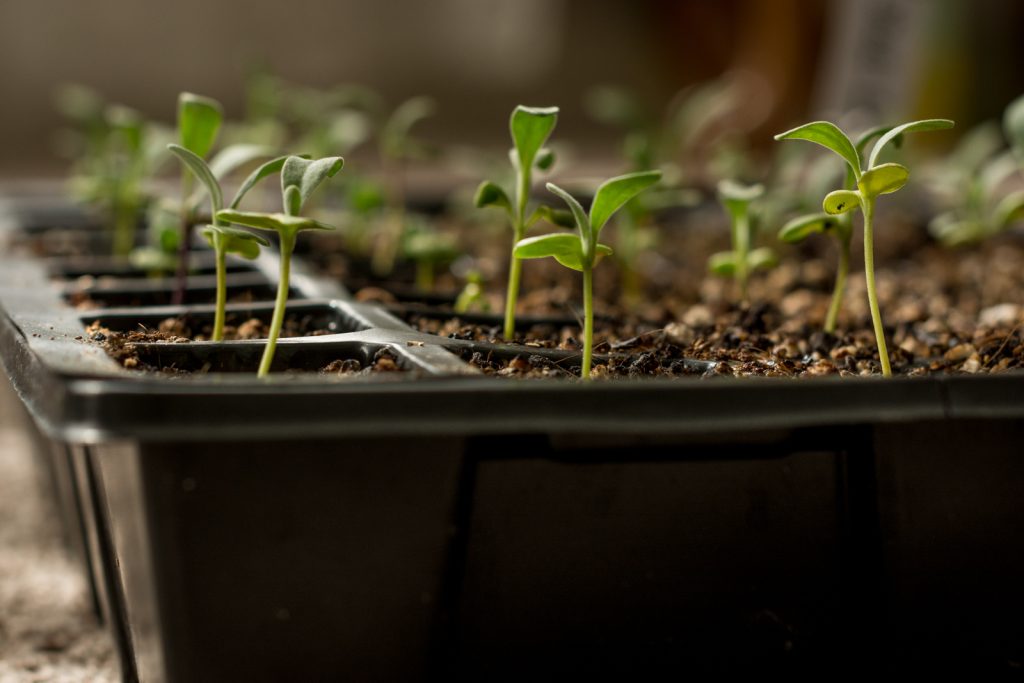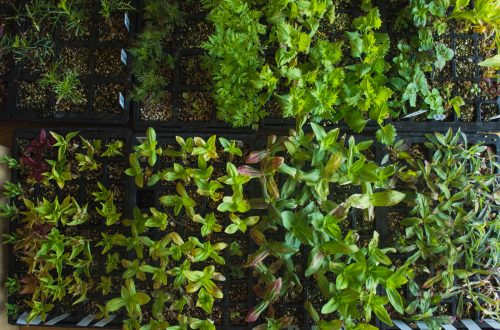
Continuing our monthly series, today’s post is all about some of the expected farm chores for February. While February in our part of the world (Central Utah) is still very much winter, the increasing daylight and closer proximity to the arrival of spring means that flower farming tasks definitely pick up a bit compared to January. There are seeds in our basement, plants in the beds that look like they might have successfully overwintered, and weeds already taking advantage in the high tunnel.
Here’s what’s on the docket for the month:
Note: There are affiliate links to products and books mentioned below.
File Taxes
Late winter and early spring is an expensive time of the year; indeed, it’s when we seem to pay out well over half of the expenses that we expect to have for that growing year. There are seed starting supplies to replace, compost to buy in bulk, and warm-season bulbs and tubers to pre-order. There are also supplies to replenish, annual fees to renew, and so much more. Because of all that, we don’t want to leave taxes until the last minute, especially if we’re expecting a refund. If we expect money back, we’ll need that money for farming expenses, and if we owe money, we need to make sure to pay that upfront before we’re starting to put in major seed and bulb orders.
Look Into Ordering Compost
One major yearly expense is good quality compost so that we can put a fresh layer on all the beds and help the soil regenerate after an intense season the year before. It is far more cost effective at the scale we’re growing on to order compost in bulk rather than buying it in individual bags, but the process can take awhile. You first need to locate a good company or seller who has the kind of compost you want (manure-based or plant-based), then you need to figure out how many yards you need and if you need it delivered or not (if that’s even an option).
We’ve gotten burned too many times in the past with getting bad batches of compost that cost us far more in the long run than the cheaper price we were able to get for them, so I’m now (finally) willing to shell out more money for higher quality compost that’s actually been tested. Because we need the compost delivered by early March — when the snow usually starts melting enough that we can start working it into the beds — I need to have that order finalized by this month.

Open CSA Subscriptions
The biggest holiday of the year for flowers is Valentine’s Day, but since we don’t have anything growing in February, we open up our CSA bouquet subscriptions in early February instead so that people have that as an option for the holiday. This involves lots of scheduling out of social media content — both before they open to drum up interest and after — as well as constant monitoring of our inboxes and texts to make sure we’ve responded to all inquiries and messages.
I also create a spreadsheet for subscription members that includes their name, address, the type of subscription they ordered, if they paid for delivery or opted for pickup, and highlighted boxes corresponding to the number of bouquets in the subscription that I can then enter the dates of when those bouquets are delivered. I also order special gift certificates in January just for subscriptions so that people have something to actually give in case the subscription is a gift for someone, which I mail out within a day or two of the subscription being purchased.
Related Post: How Soon Should Your Flower Farm Offer a CSA Subscription?
Sow Hardy Annuals Inside
While I start a few things in January, the majority of the intensive seed starting starts in February and then goes through April. In February, I sow the first successions of all of my hardy annuals, of which I grow a lot (think snapdragons, sweet william, stock, strawflower, scabiosa, statice, etc.). Hardy annuals should be planted out 6-8 weeks BEFORE your last frost, which means that they need to be started well before that target transplant date (usually 4-10 weeks before). Once the seedlings have germinated, we fertilize ours weekly using fish emulsion (diluted in water).
Because people are always asking me, here are the seed starting supplies we use:
- shop lights (I’ve tried the fancier, more expensive growing lights, but these shop lights work just as well for a fraction of the price)
- heat mats for germinating
- cell trays with germination domes and bottom trays
- perlite, vermiculite, and coco coir for making our own seed starting mix
Soak/Presprout/Plant Ranunculus and Anemones
The ideal window for planting ranunculus and anemones in Zone 6 is in the fall if you’re planting into a high tunnel, as we do. However, there are two more windows of planting that also work — for us, we can do a second flush into our high tunnel now (in February), and then we can also do a planting out into open beds (so, not under cover) in late March. These later flushes don’t produce the stem length or have the productivity of the fall-planted corms, but they can still provide us with blooms during the busy spring season, especially for shorter arrangements.
Anemone and ranunculus corms must be soaked for 3-4 hours before planting, and pre-sprouting is usually recommended too, which just means that you plant them into seed starting mix for a few weeks until you see growth, at which point you plant them out after hardening them off. For this February flush, I’m just planting them straight into the ground of the high tunnel without presprouting them, but if I were to do the latest succession in March, I would want to be sure to pre-sprout them first so that they had any chance at all of blooming before it got too hot.

And that wraps up the major items on our to-do list for the month! Drop a comment below if you have any questions 🙂






